
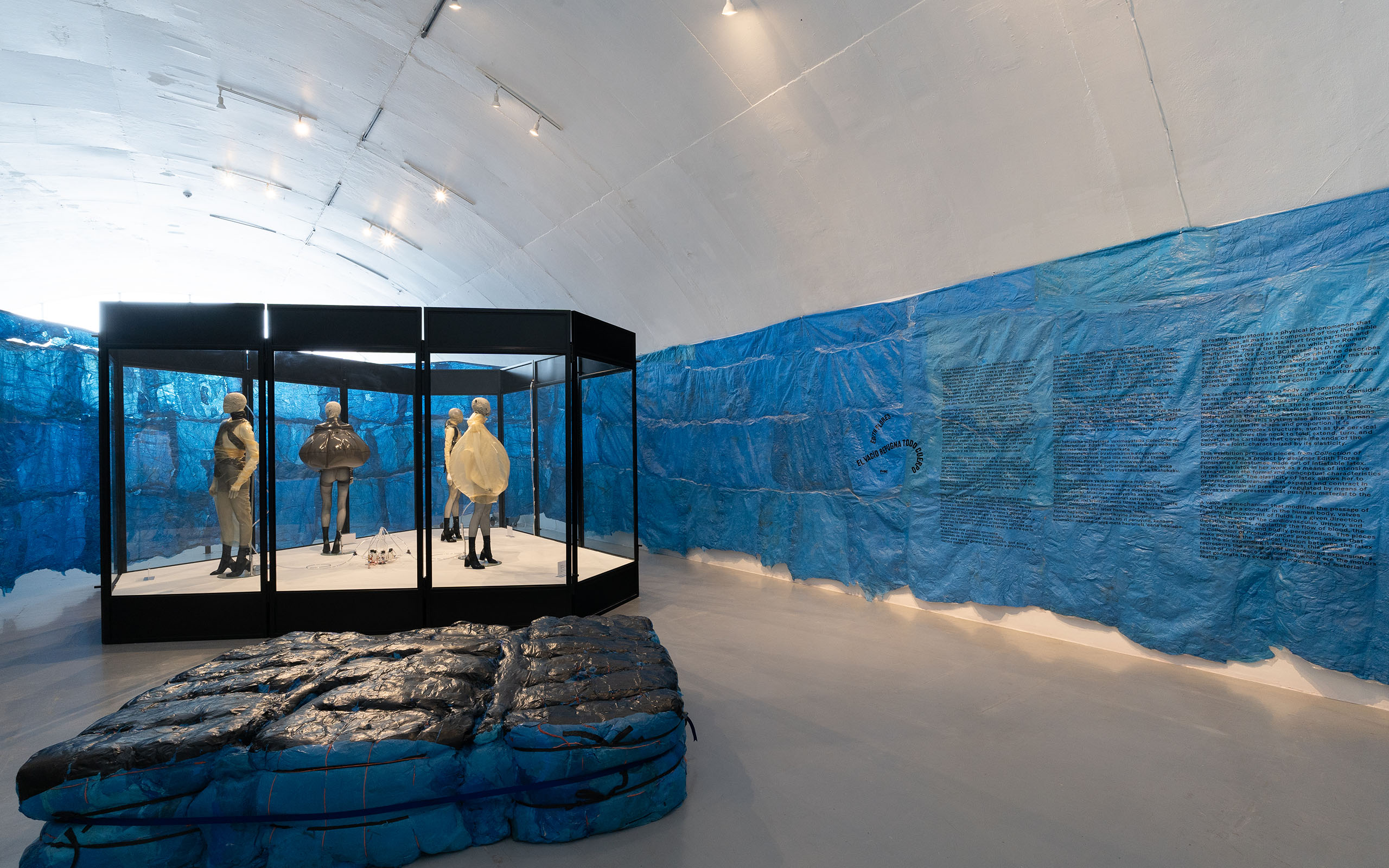
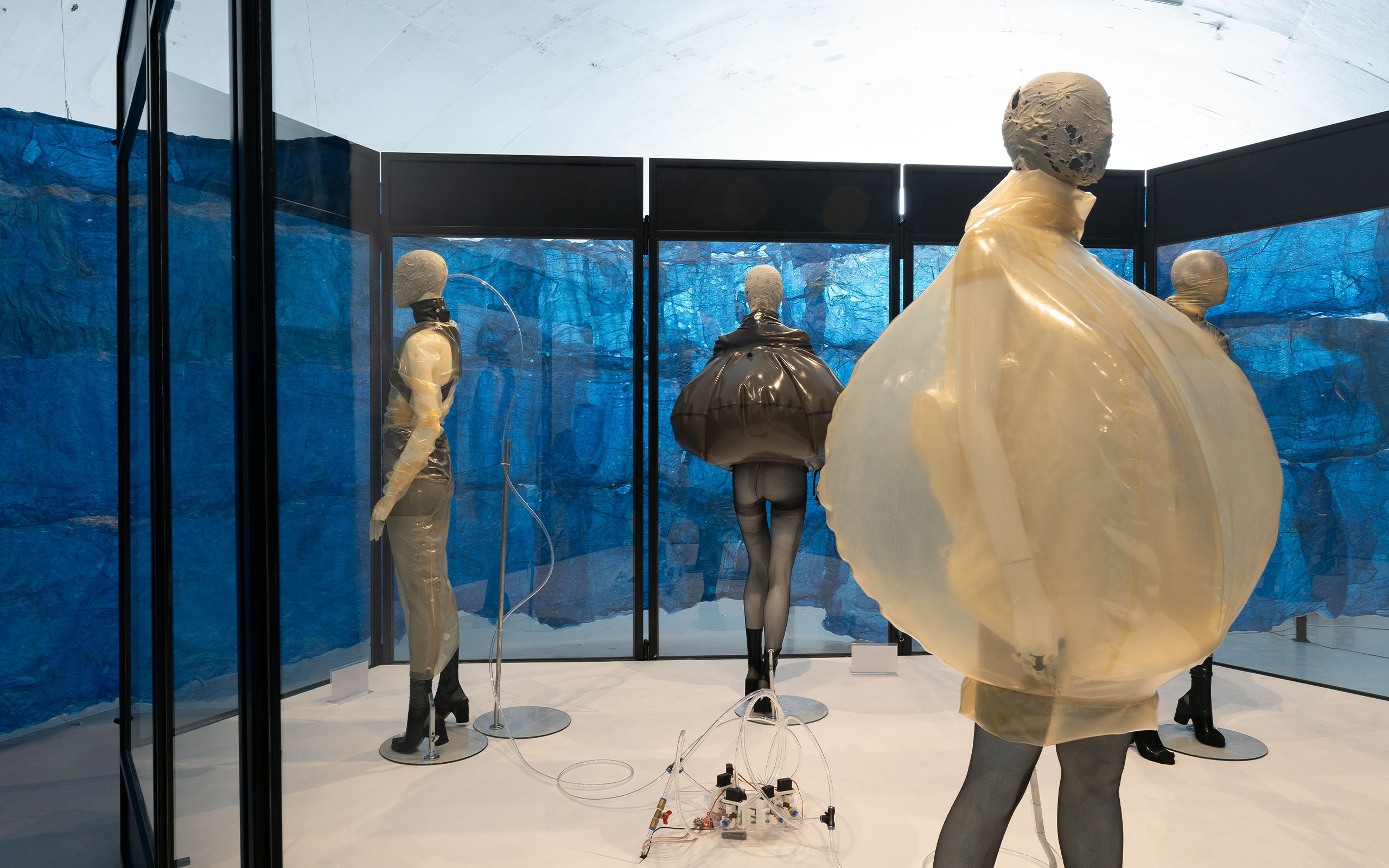
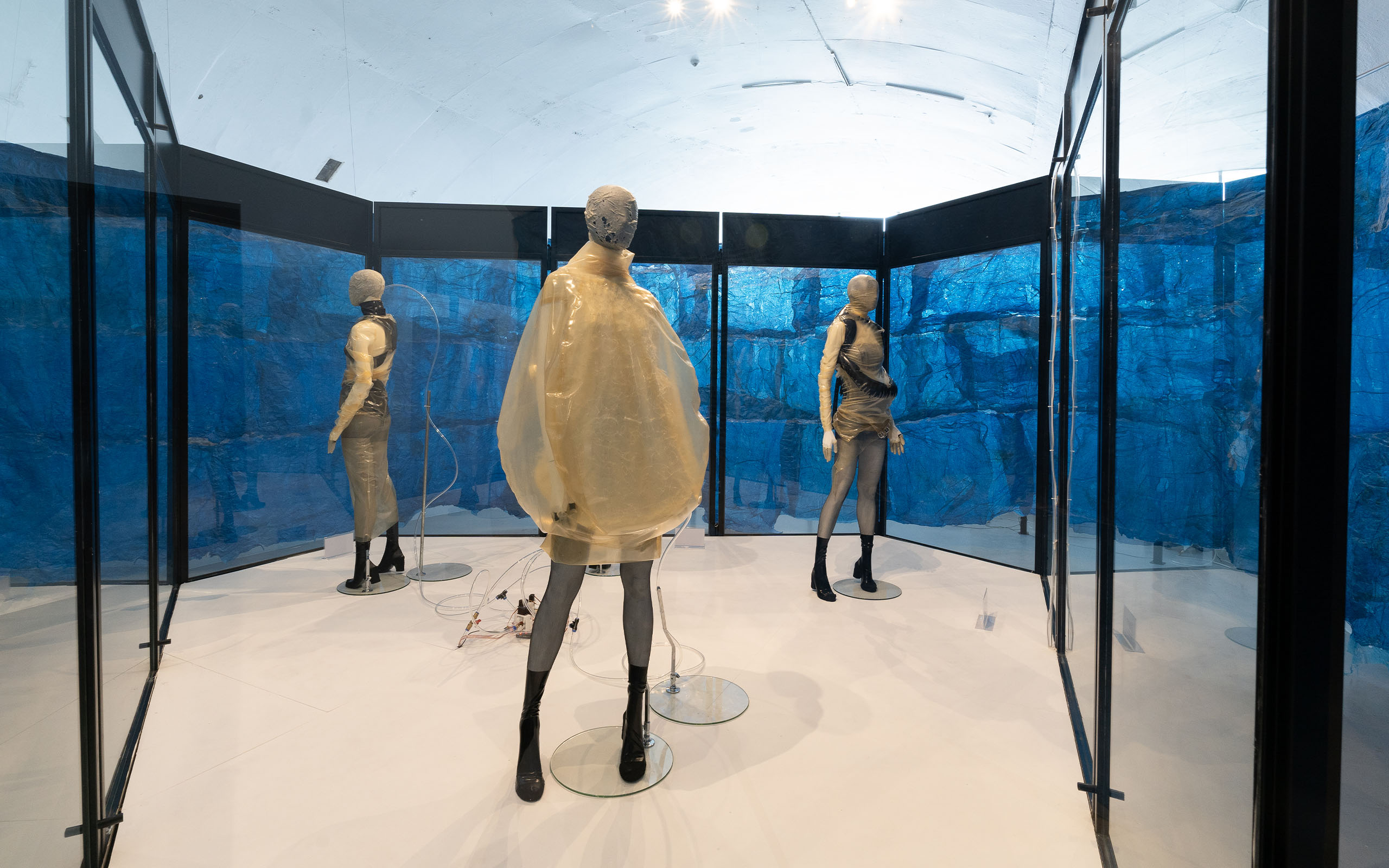

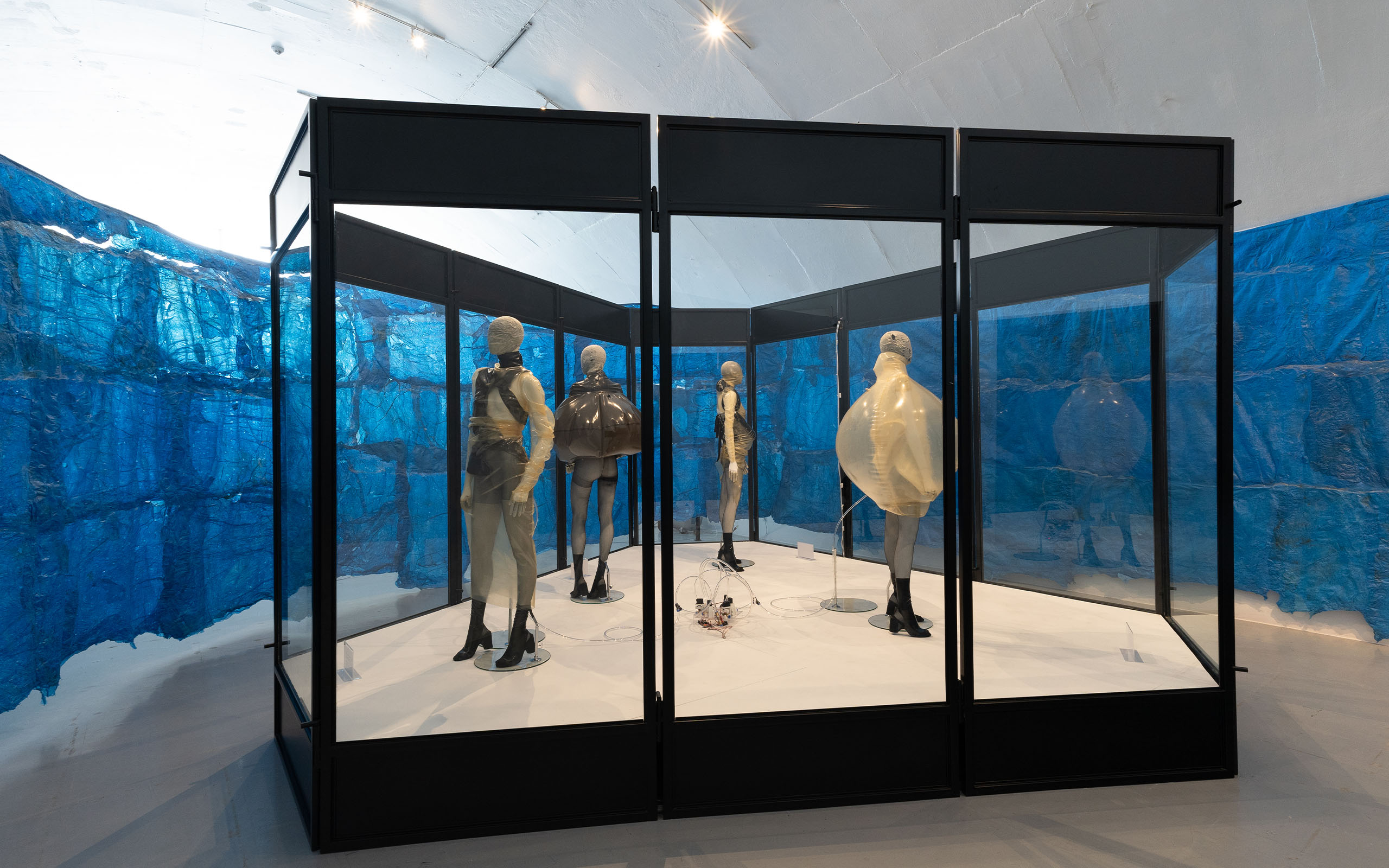
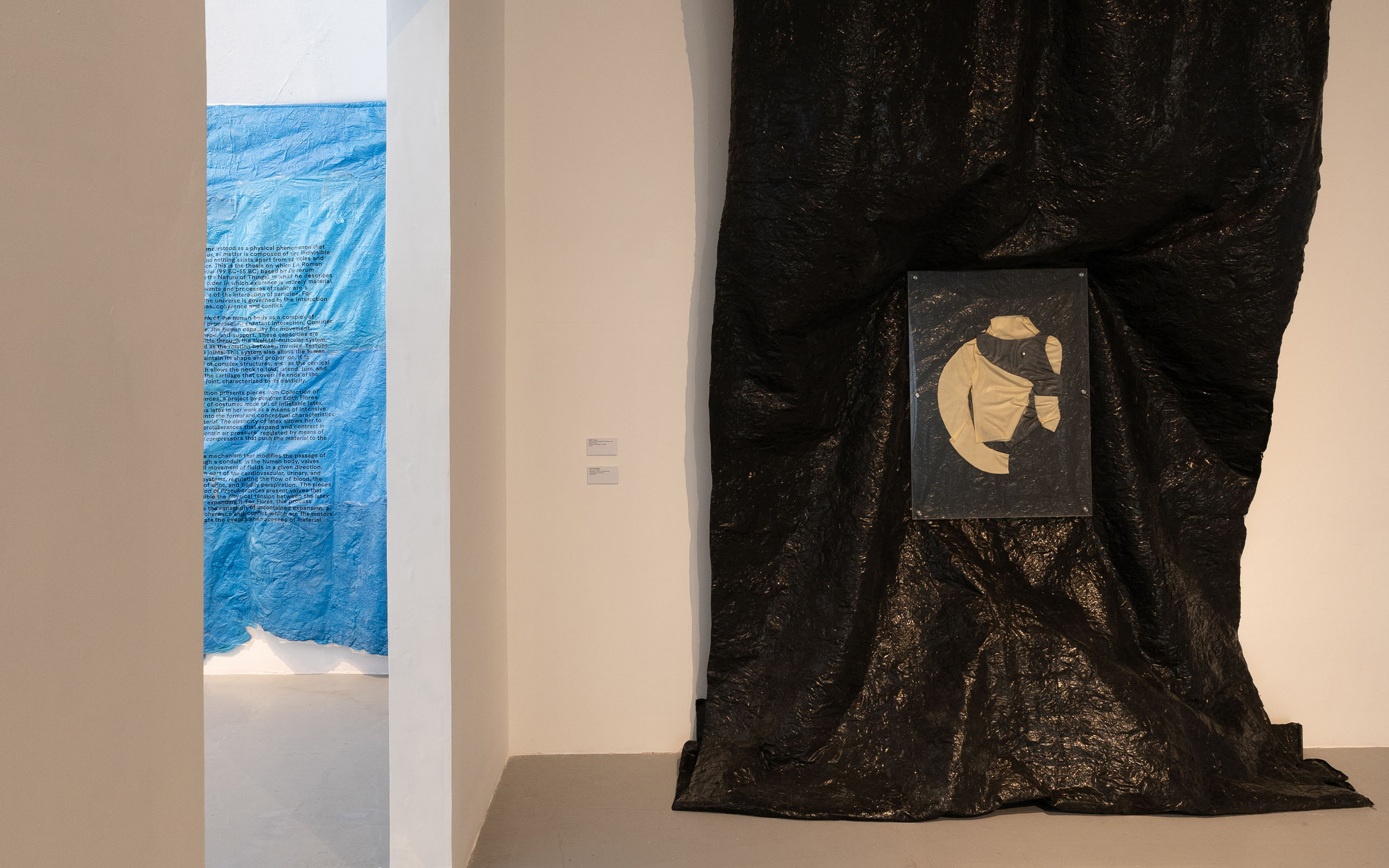
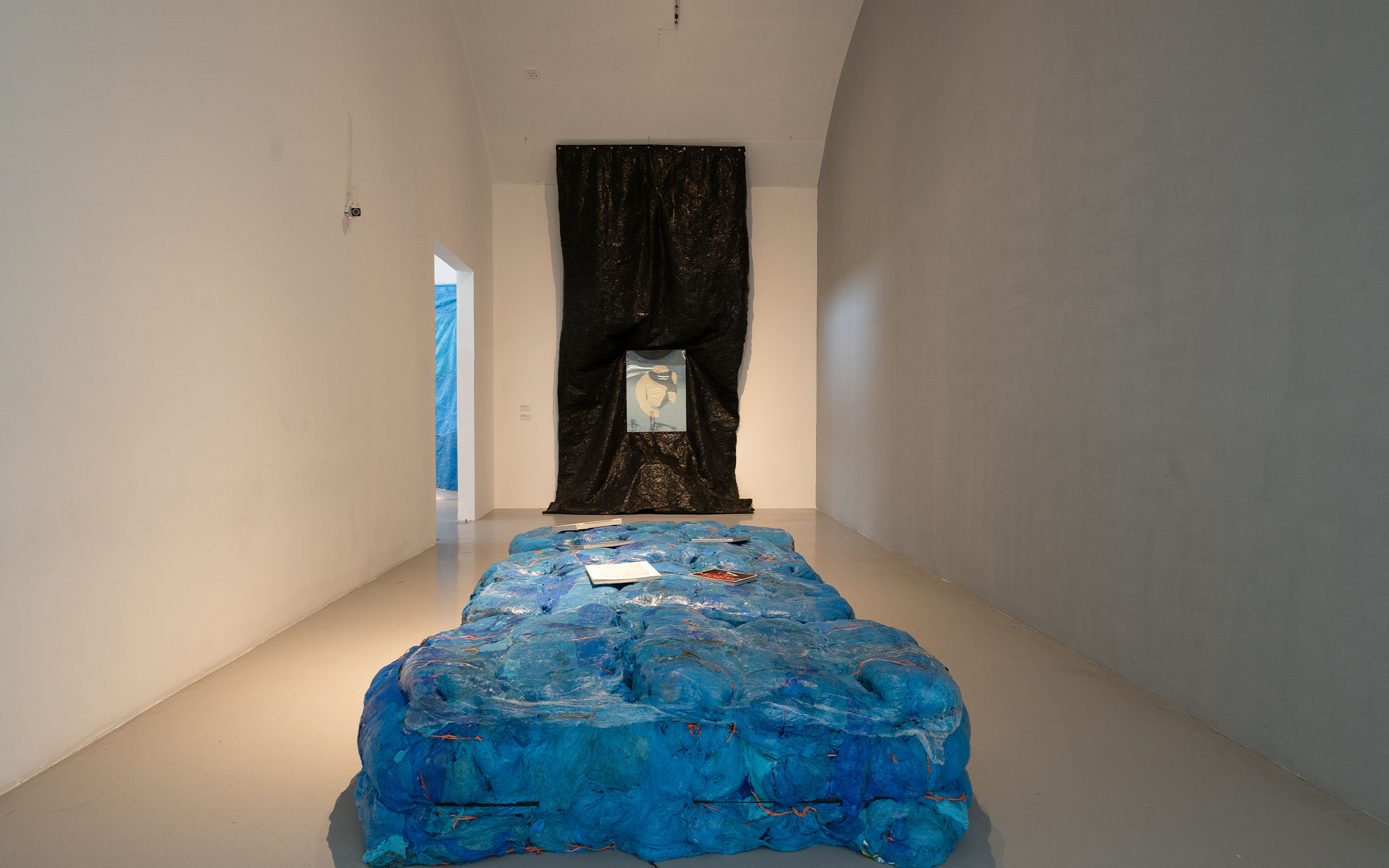
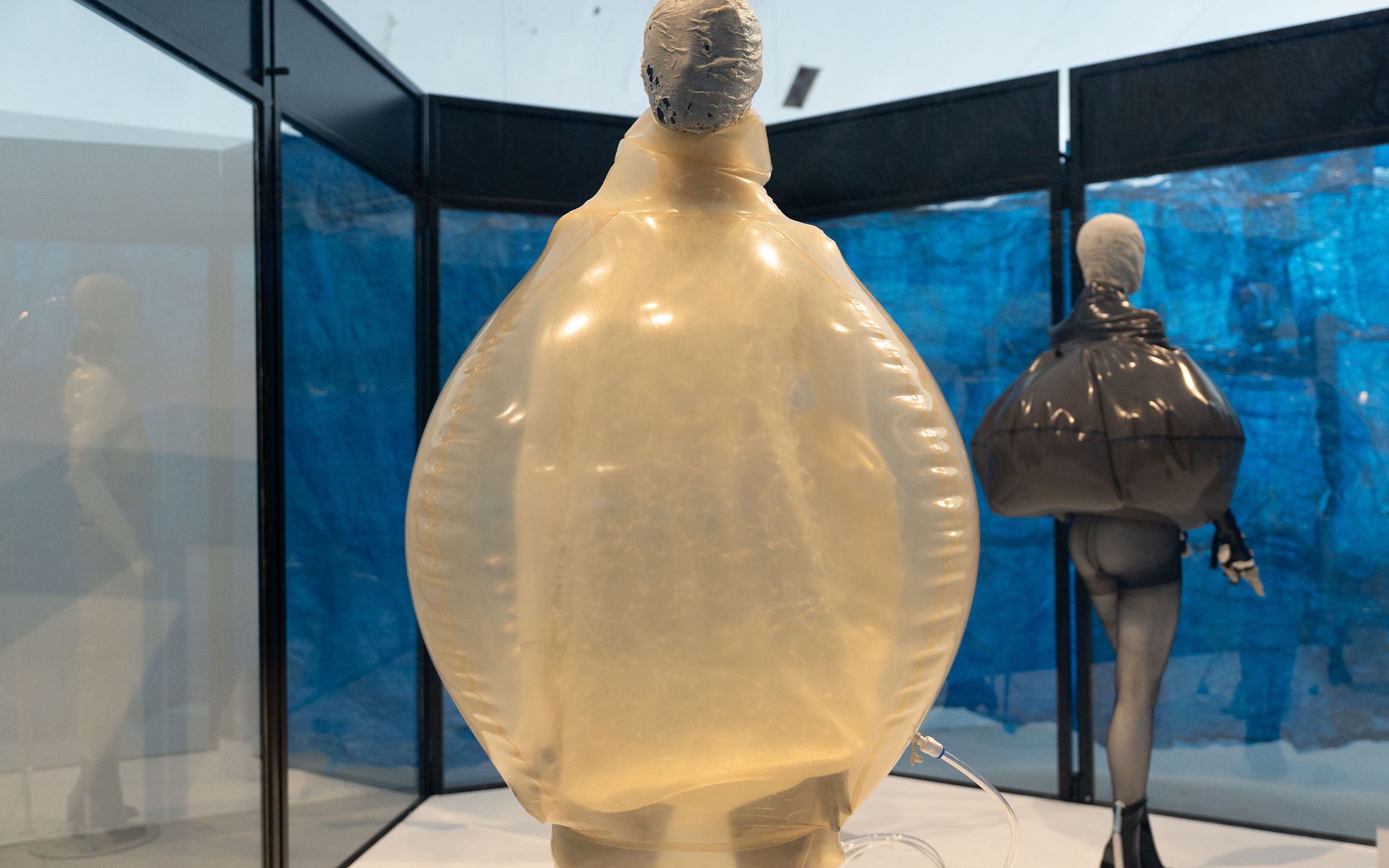
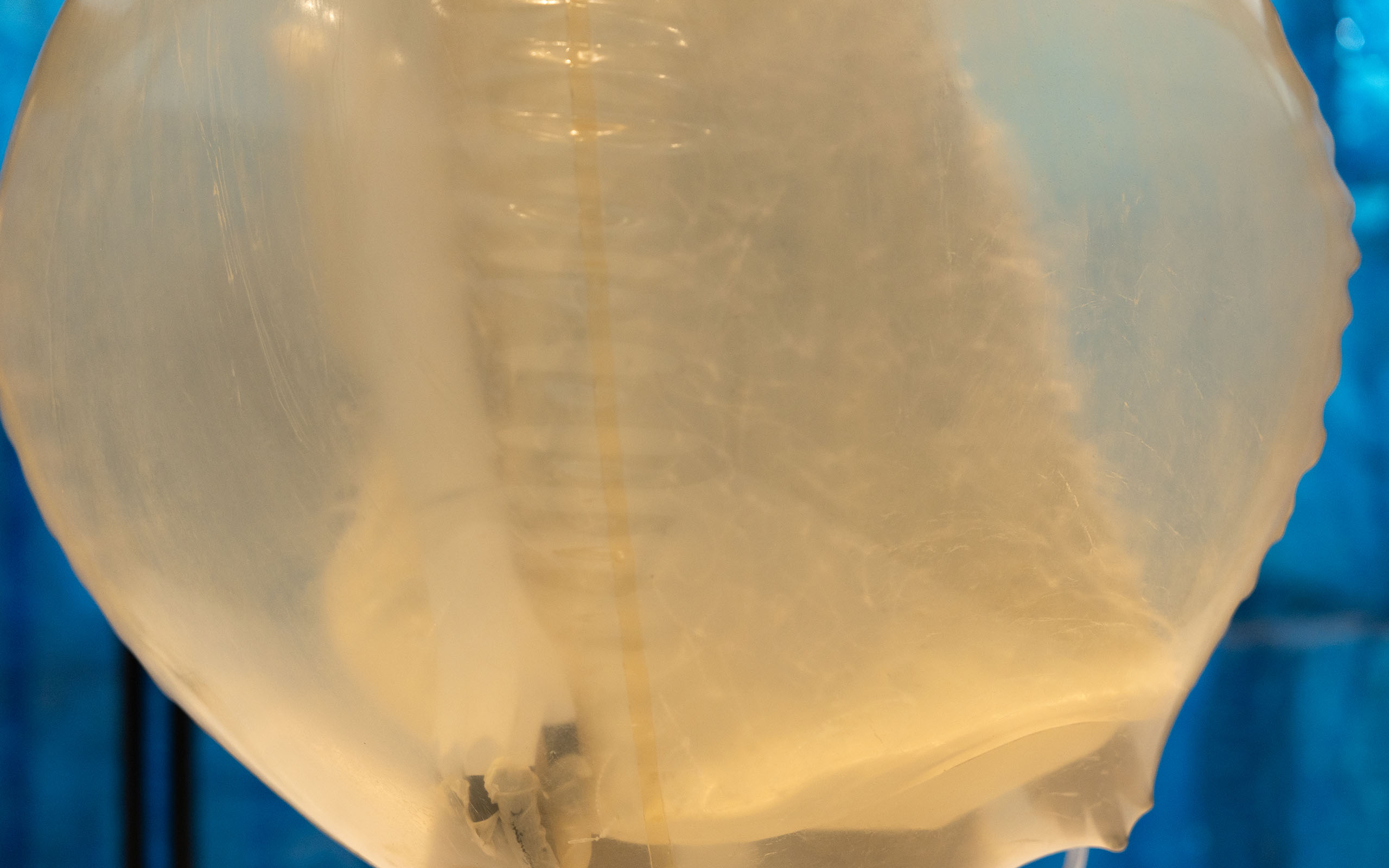
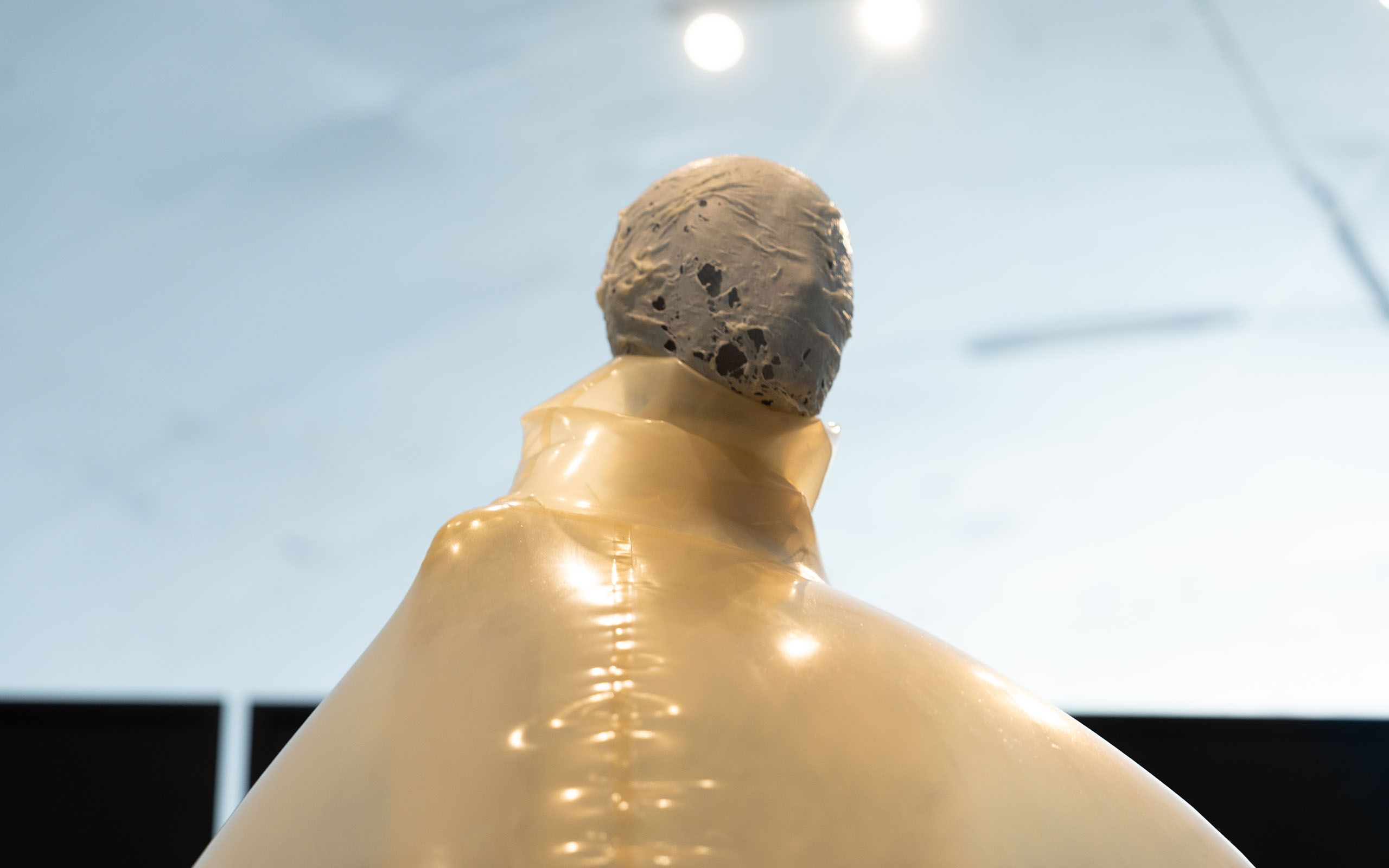
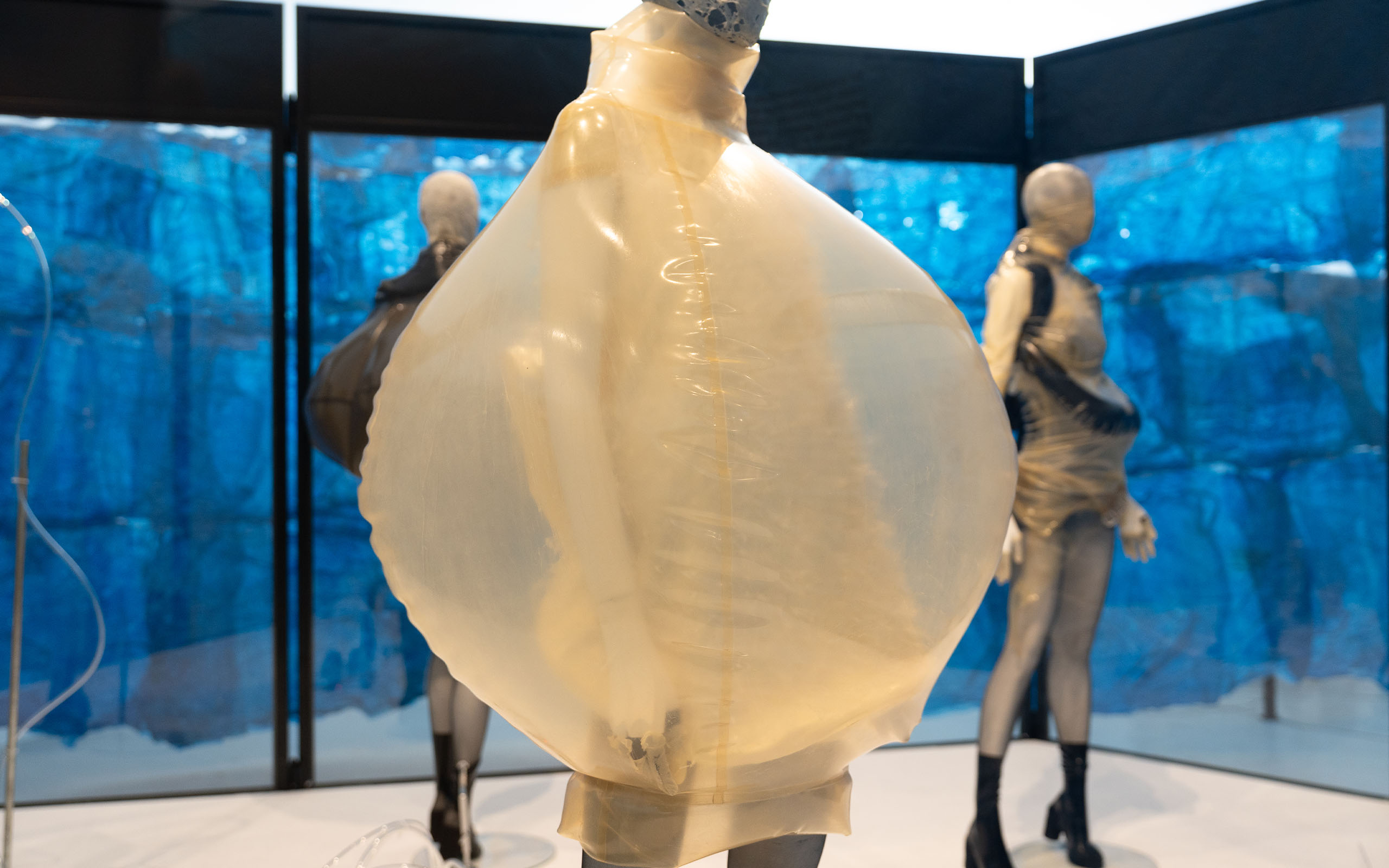

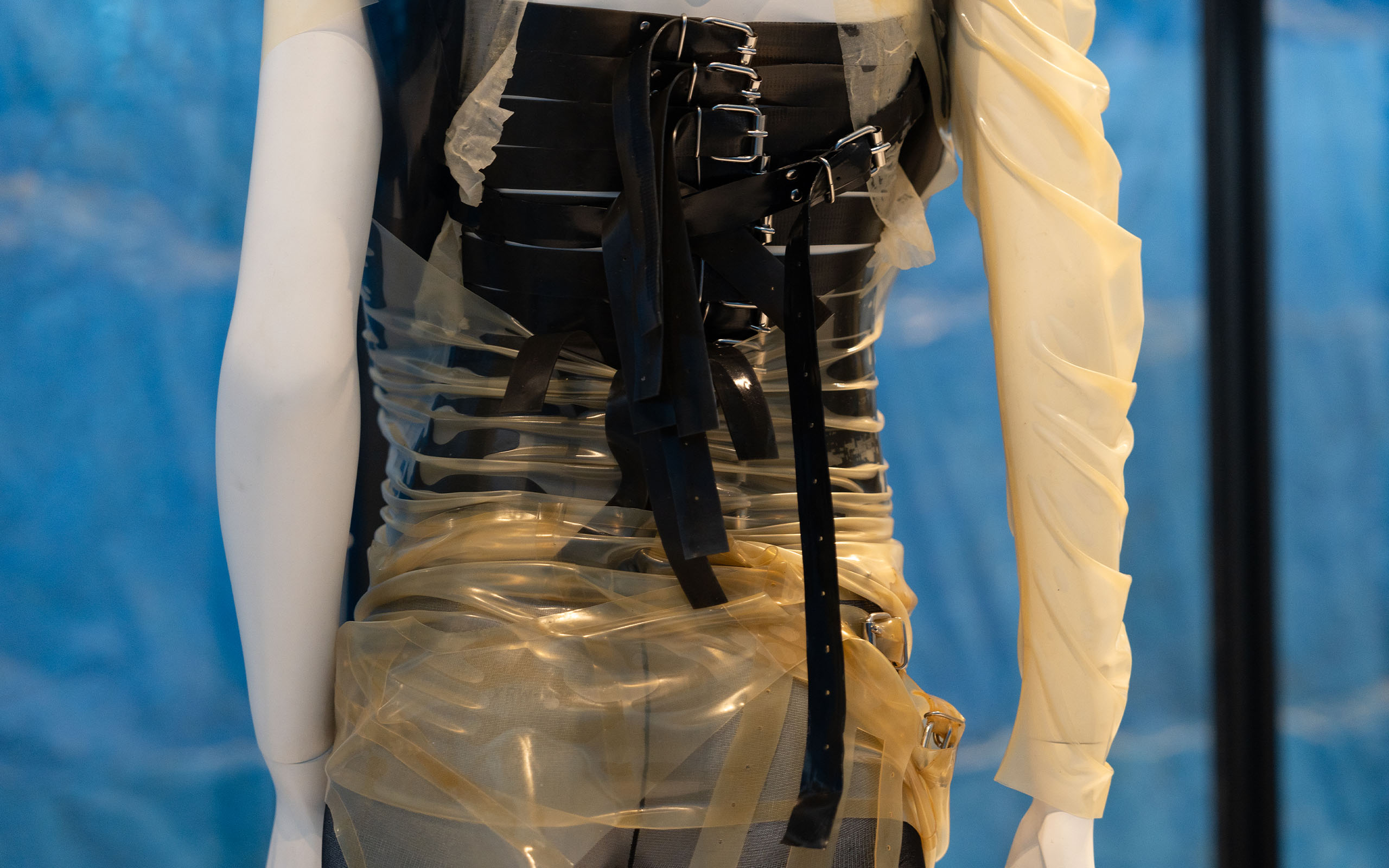
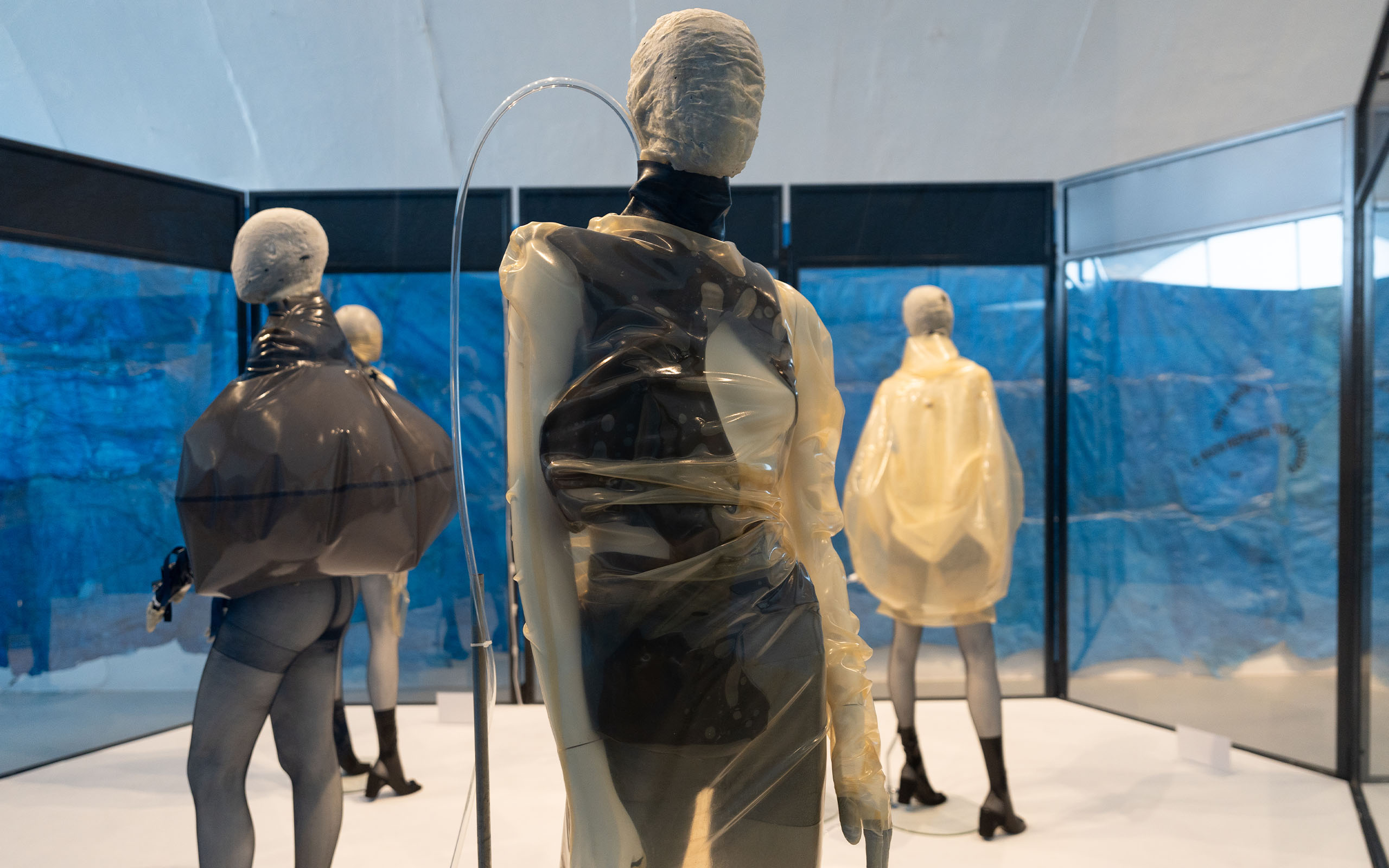
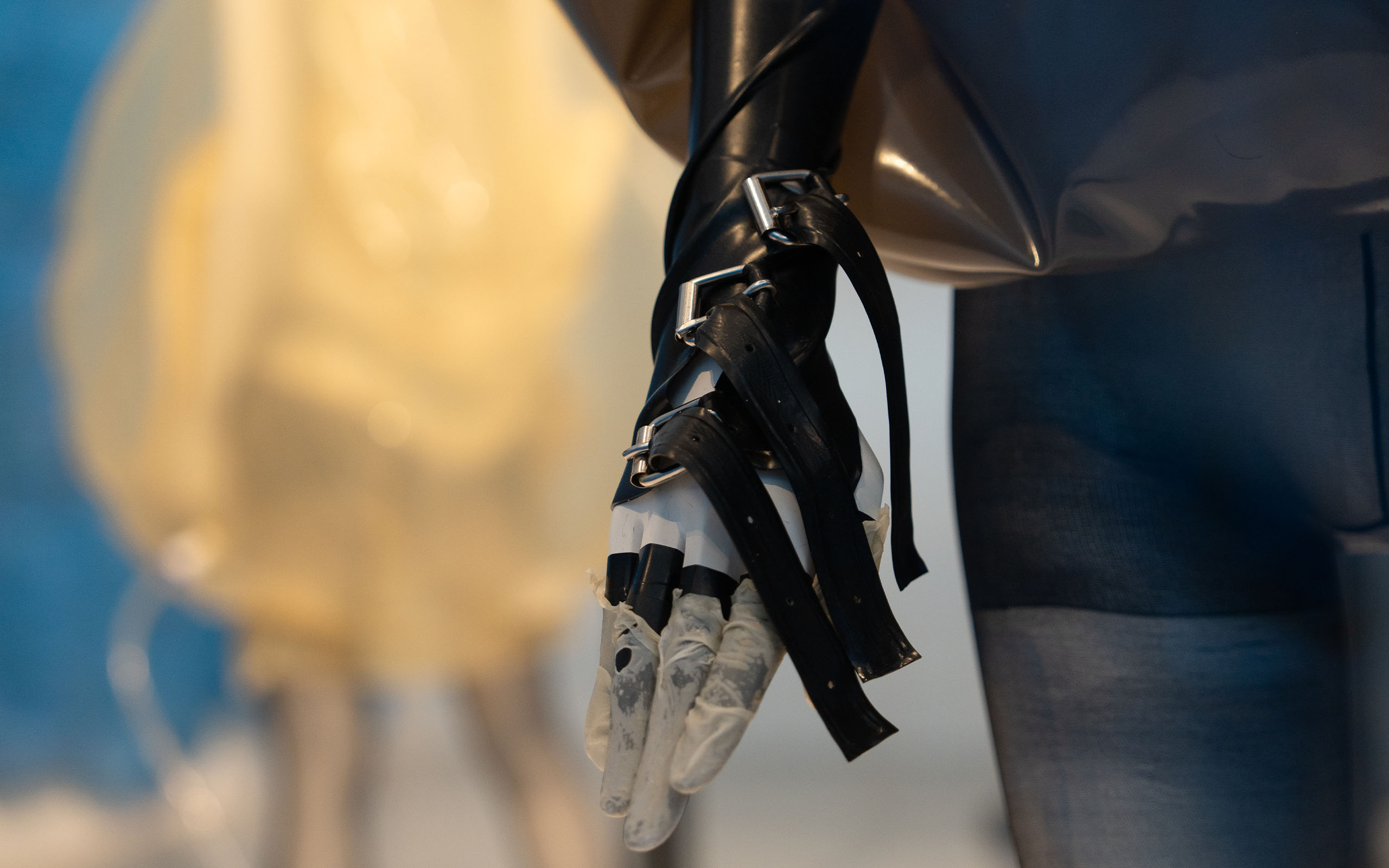
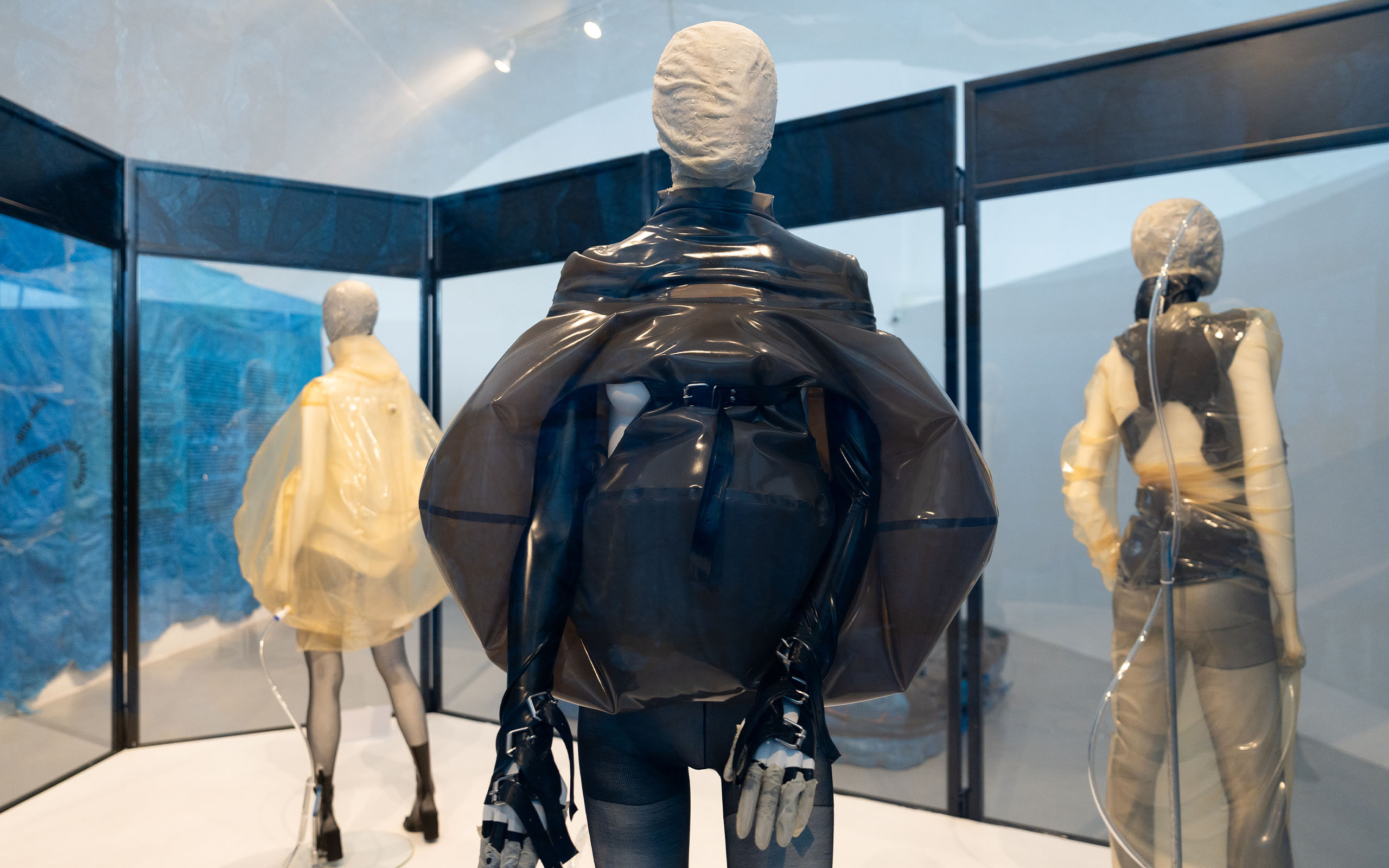
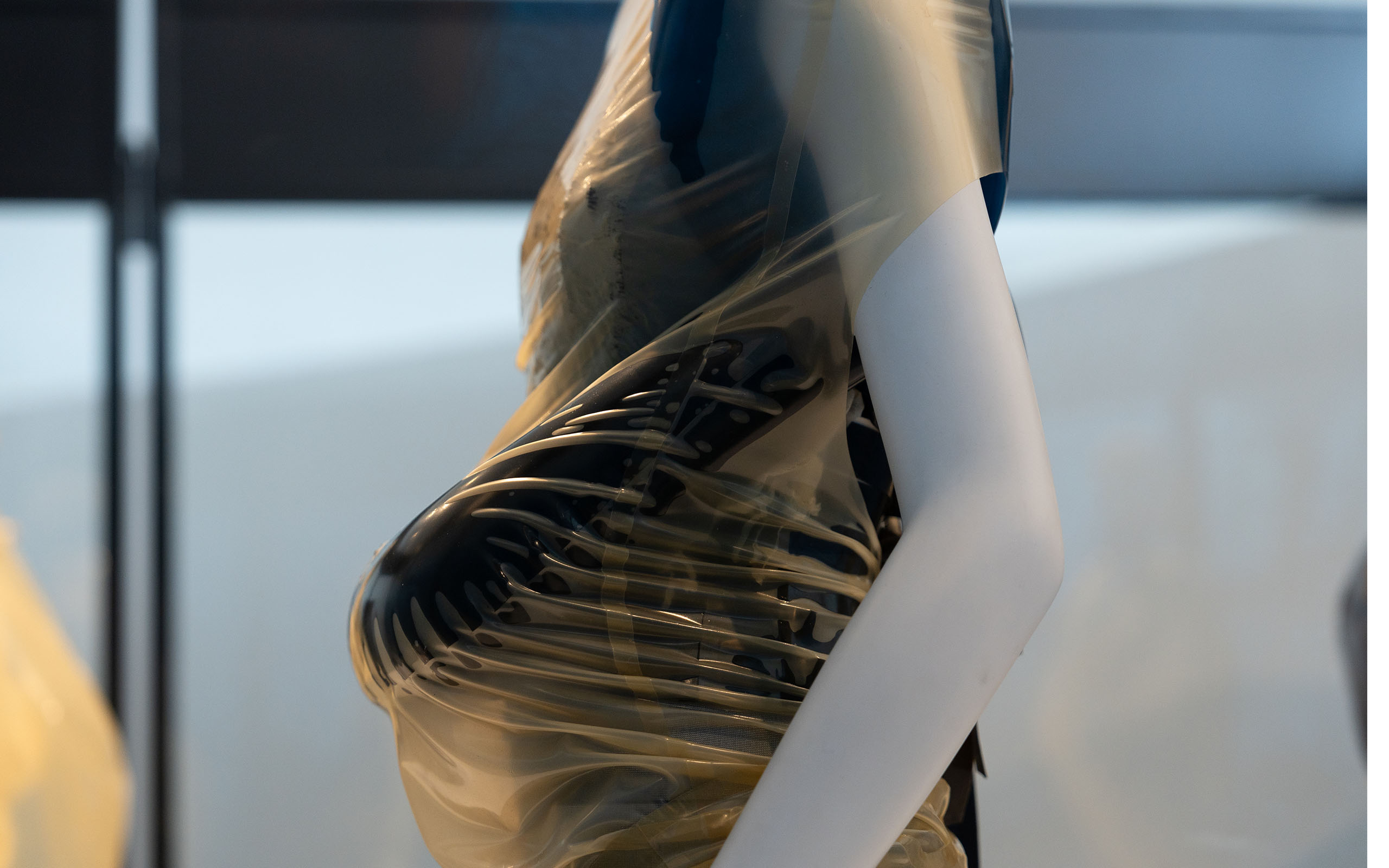
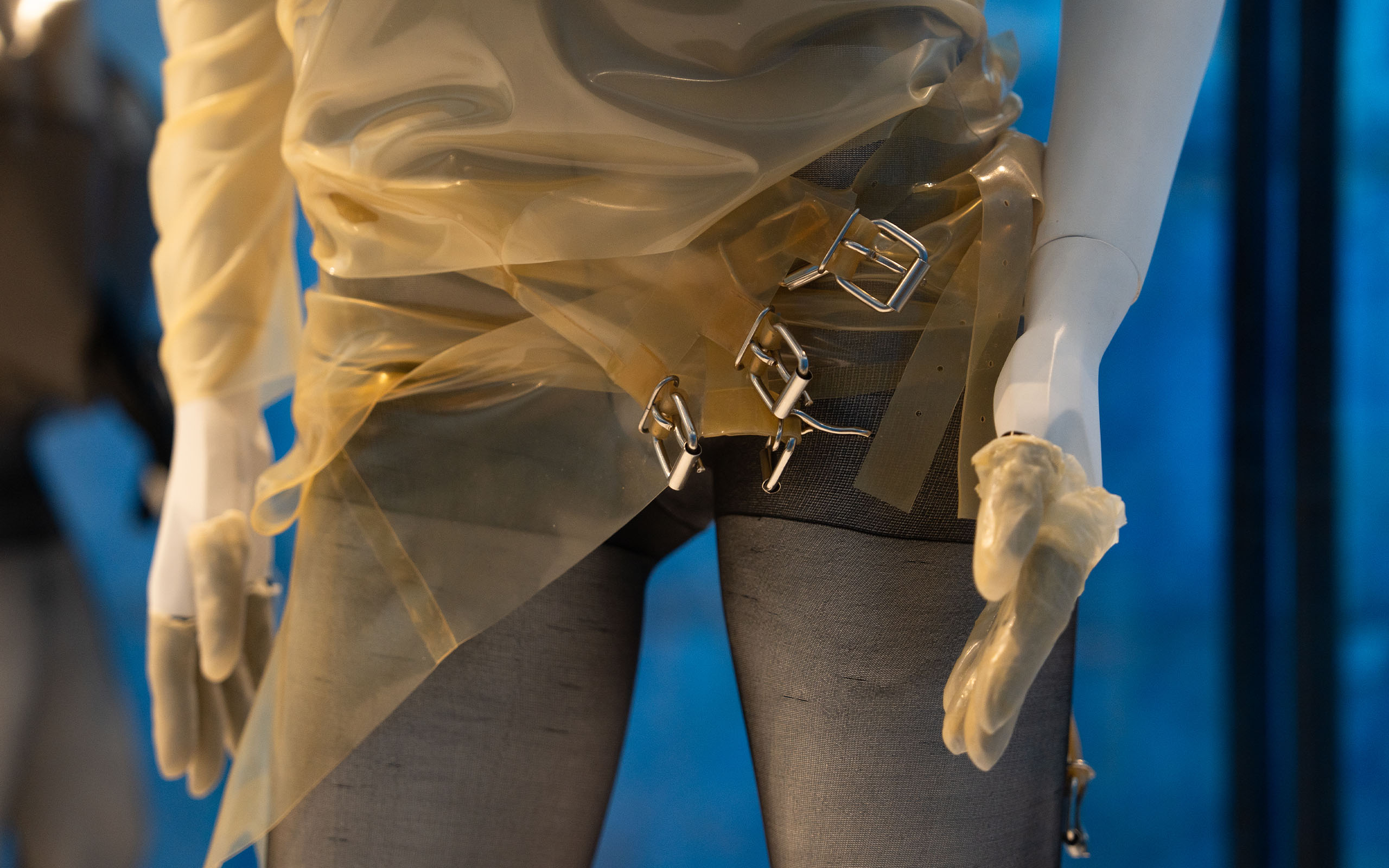

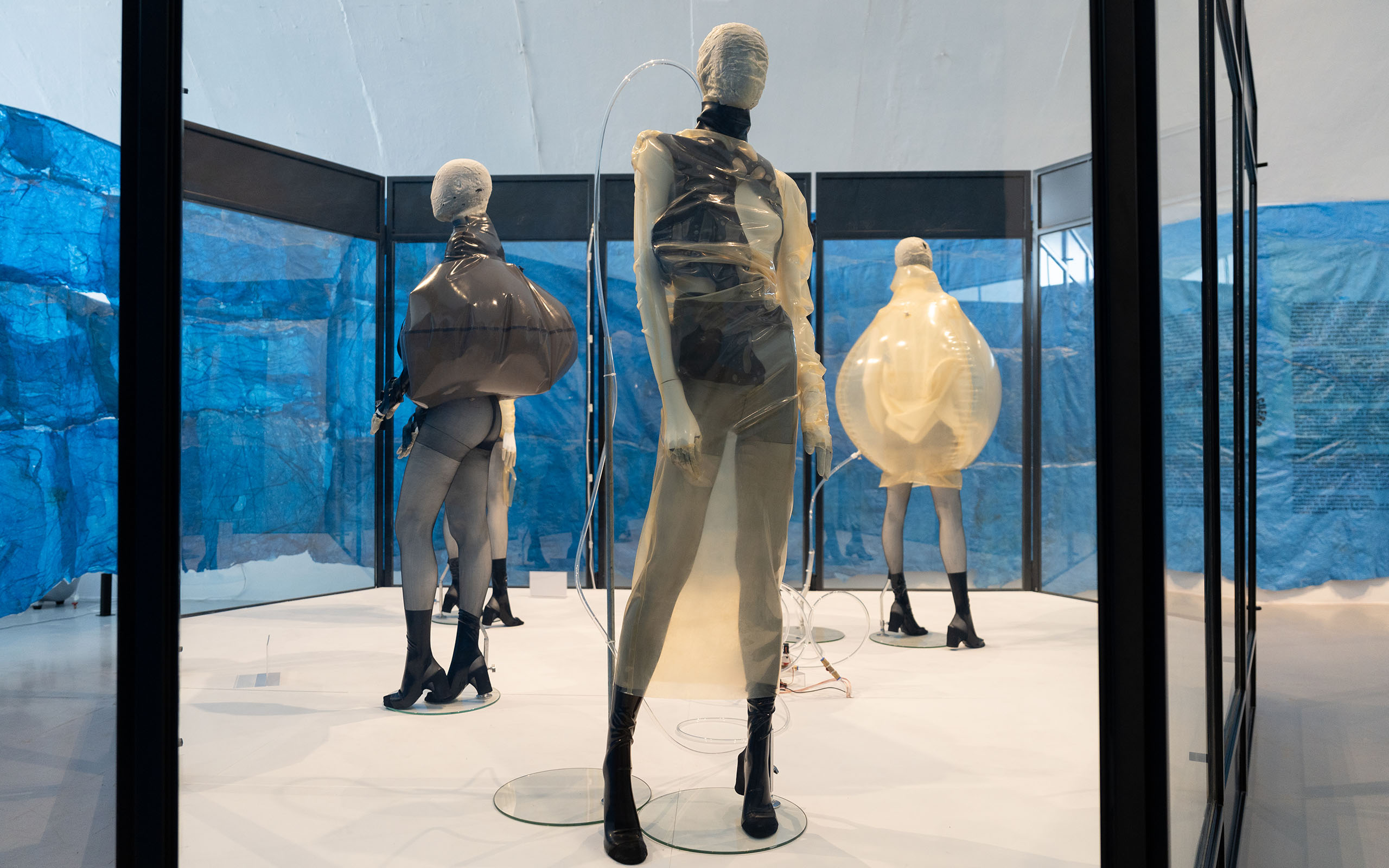
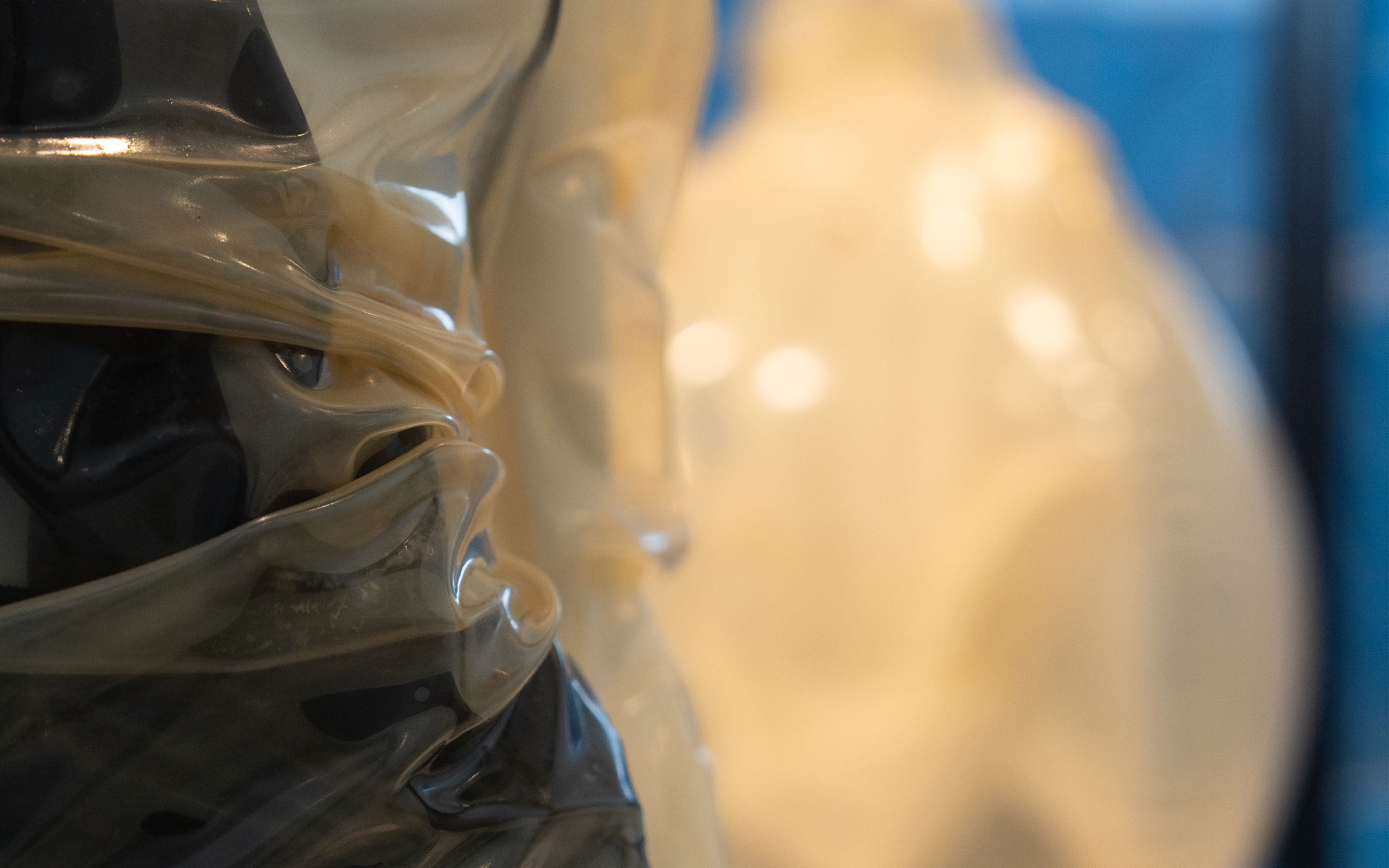

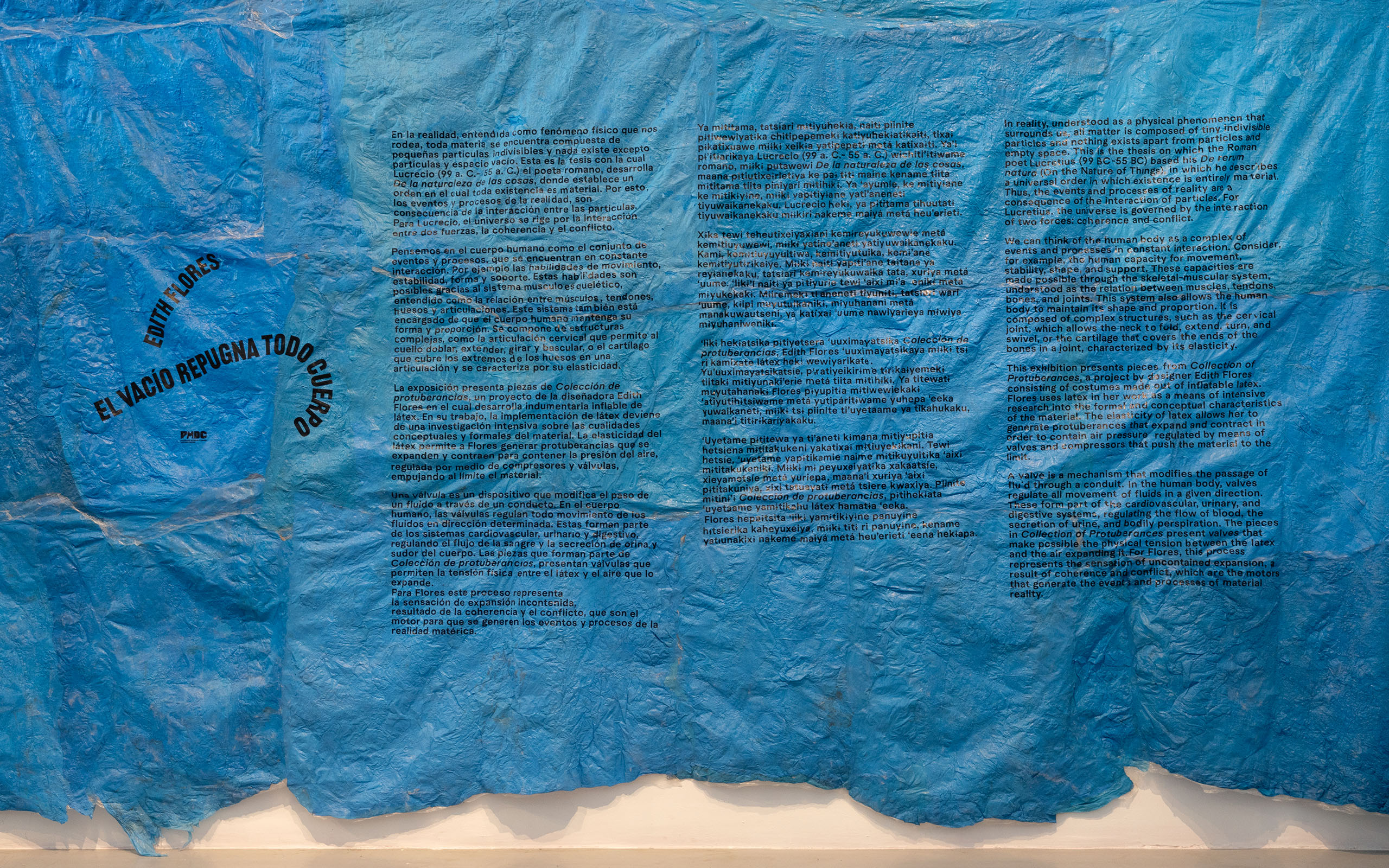
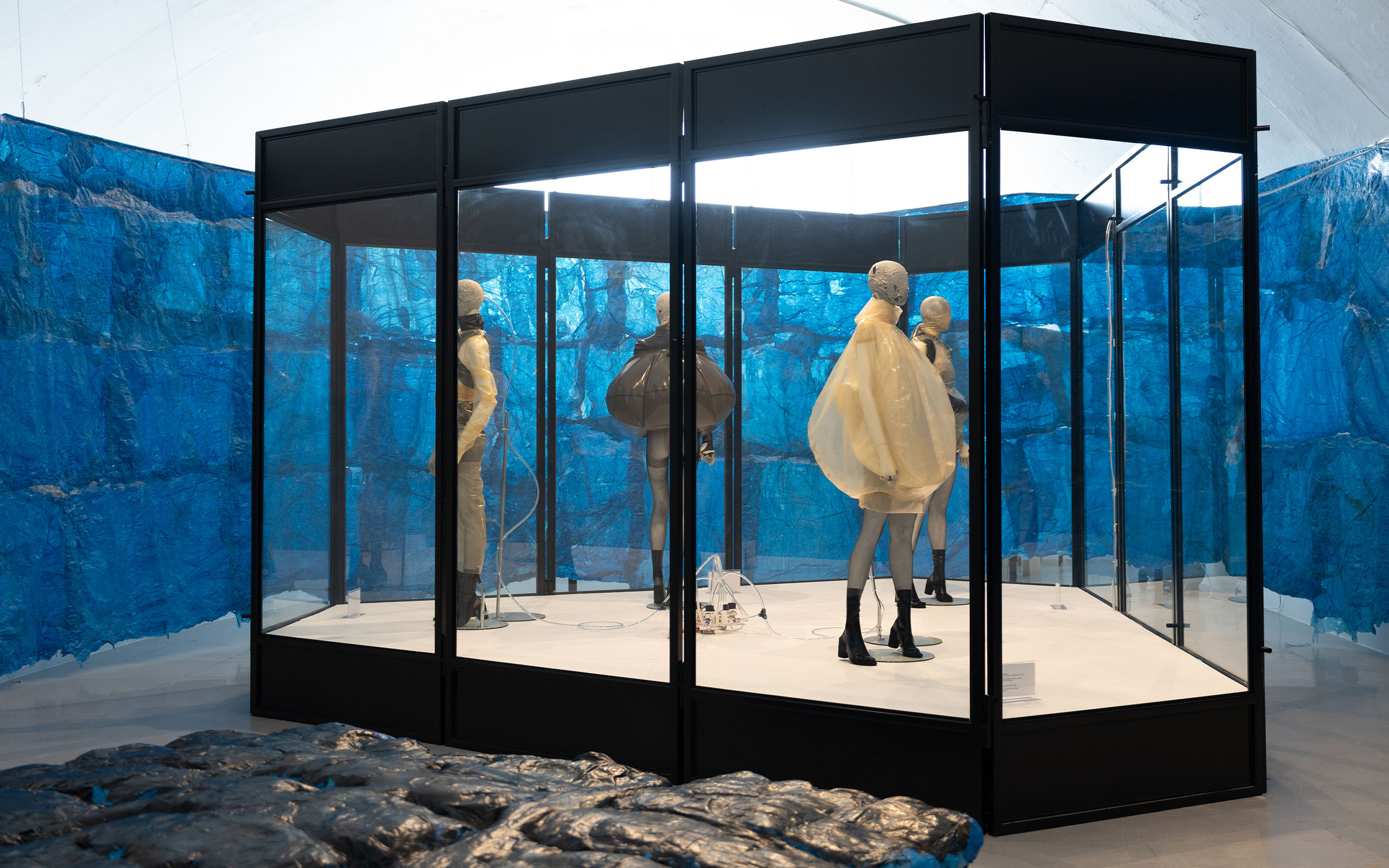
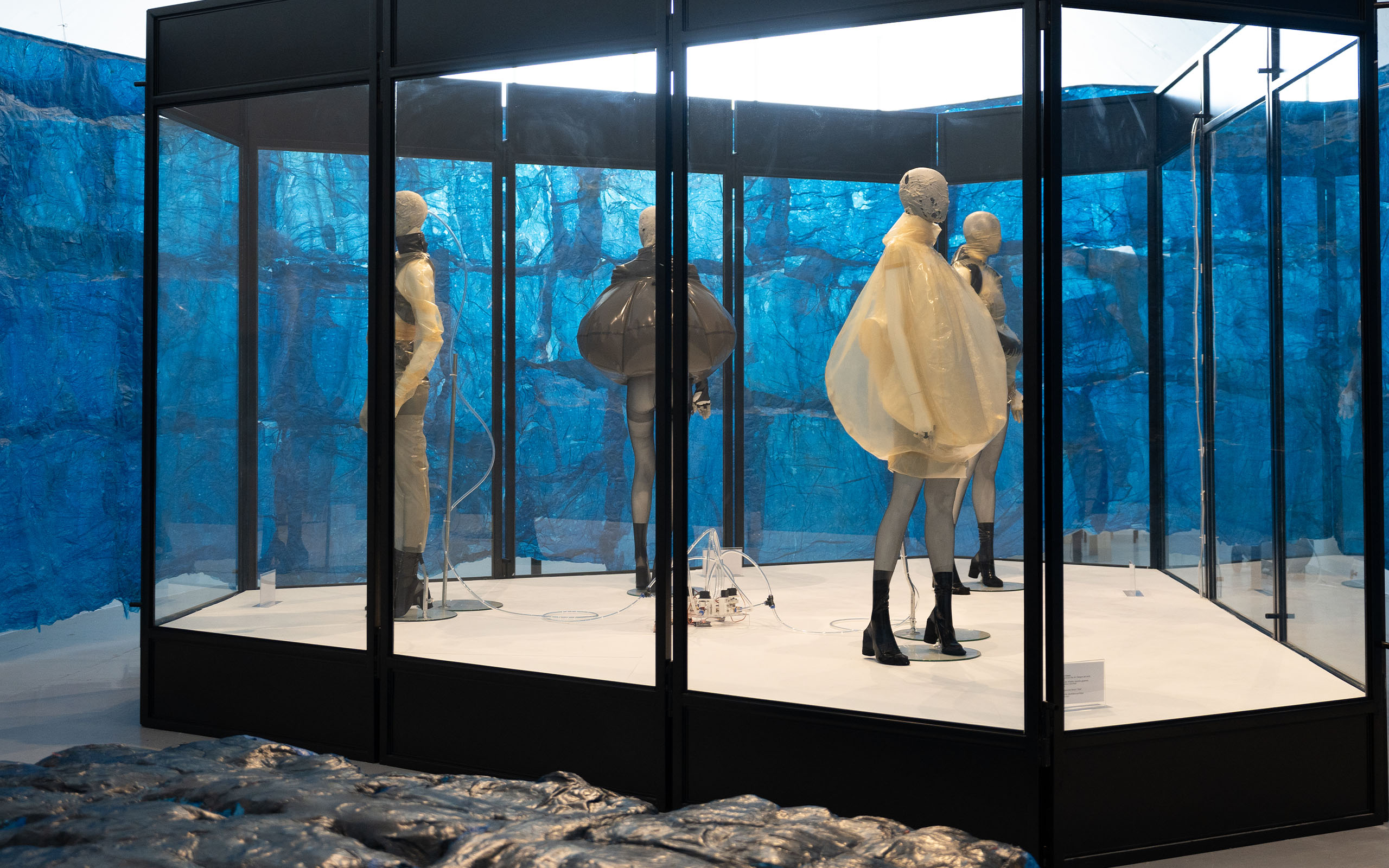
Wherever There Is Void, Body There Is Not
From July 19 to Noviembre 3, 2024
Curator: Rodrigo Santoscoy
Contemporary Fashion and Design Program
Sala de proyectos
In reality, understood as a physical phenomenon that surrounds us, all matter is composed of tiny indivisible particles and nothing exists apart from particles and empty space. This is the thesis on which the Roman poet Lucretius (99 BC-55 BC) based his De rerum natura (On the Nature of Things), in which he describes a universal order in which existence is entirely material. Thus, the events and processes of reality are a consequence of the interaction of particles. For Lucretius, the universe is governed by the interaction of two forces: coherence and conflict.
We can think of the human body as a complex of events and processes in constant interaction. Consider, for example, the human capacity for movement, stability, shape, and support. These capacities are made possible through the skeletal-muscular system, understood as the relation between muscles, tendons, bones, and joints. This system also allows the human body to maintain its shape and proportion. It is composed of complex structures, such as the cervical joint, which allows the neck to fold, extend, turn, and swivel, or the cartilage that covers the ends of the bones in a joint, characterized by its elasticity.
This exhibition presents pieces from Collection of Protuberances, a project by designer Edith Flores consisting of costumes made out of inflatable latex. Flores uses latex in her work as a means of intensive research into the formal and conceptual characteristics of the material. The elasticity of latex allows her to generate protuberances that expand and contract in order to contain air pressure, regulated by means of valves and compressors that push the material to the limit.
A valve is a mechanism that modifies the passage of fluid through a conduit. In the human body, valves regulate all movement of fluids in a given direction. These form part of the cardiovascular, urinary, and digestive systems, regulating the flow of blood, the secretion of urine, and bodily perspiration. The pieces in Collection of Protuberances present valves that make possible the physical tension between the latex and the air expanding it. For Flores, this process represents the sensation of uncontained expansion, a result of coherence and conflict, which are the motors that generate the events and processes of material reality.
Rodrigo Santoscoy
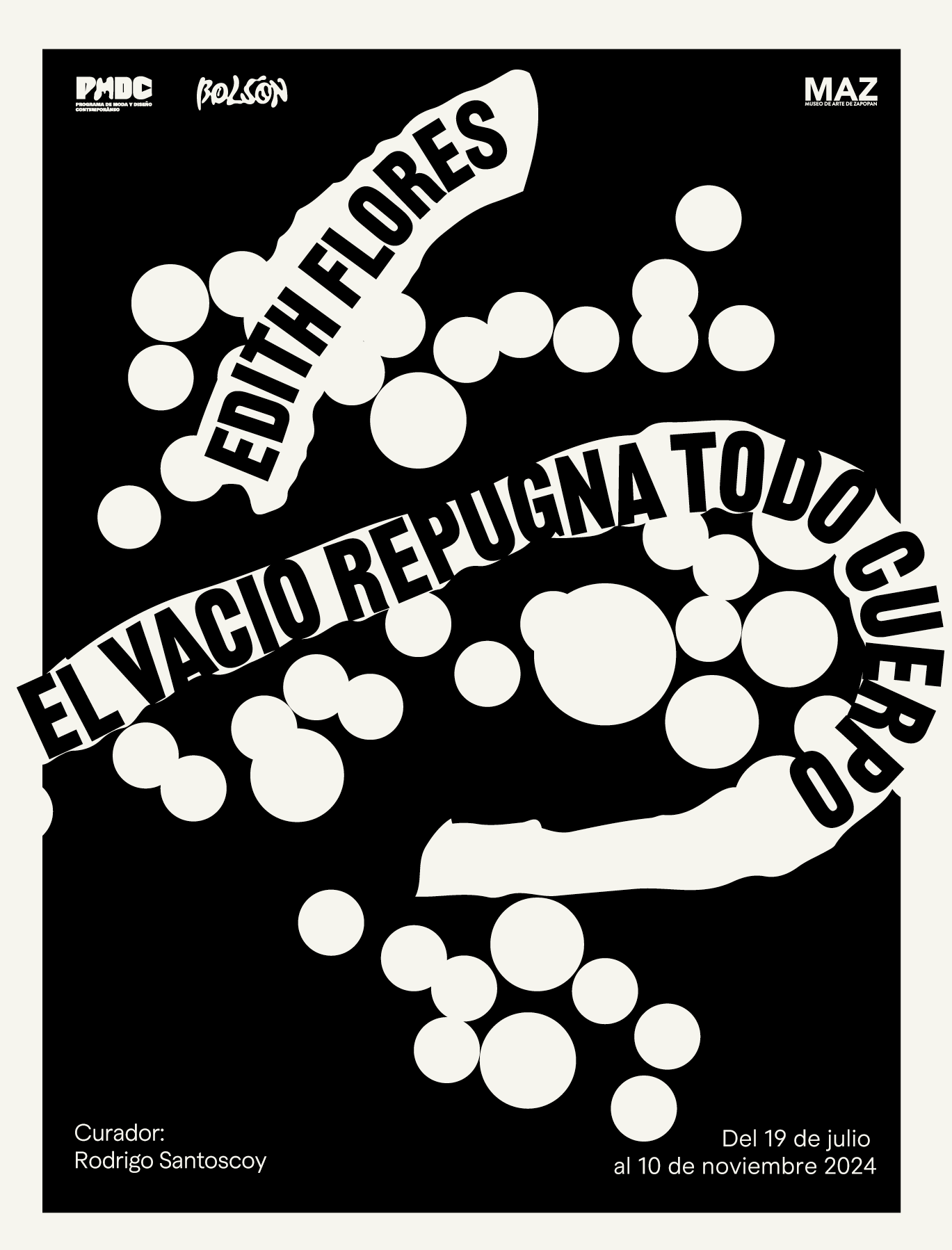
Info
Date:
8 October, 2024
Category:
